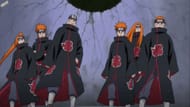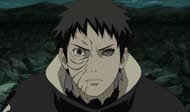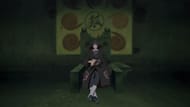Naruto is arguably one of the most popular animanga series ever created, achieving a timeless status. Past, present, and future generations have had, have, and will have a chance to experience the epic journey of the No. 1 Knucklehead Ninja.
However, one of the series's biggest criticisms lies in creator Masashi Kishimoto's reliance on foil characters, often building their personalities and values in line with Naruto. To be clear, foils can add complexity and depth to the story. Yet, Kishimoto’s repeated use of this strategy hampers the growth and variety of character relationships.
Many antagonists in the series seem to be very similar to the protagonist but tend to tread down a dark path instead. Essentially, there looks to be a "you're just like me" narrative that happens over and over. While Kishimoto has introduced memorable and even likable villains, this constant repetition stands as a flaw when looking at the overall picture.
Disclaimer: This article contains the sole opinion of the author.
Relying on foil characters might be Naruto's biggest blemish

As mentioned, while we received several memorable villains from the series, Kishimoto often relied heavily on foil characters. These characters were crafted with parallels to Naruto Uzumaki. When they ultimately battled and the smoke cleared, a case of "you're just like me" occurred often, and the blonde used his Talk No Jutsu to get through to the villain.
While this approach applied to one or two of his foes, the same setting over and over tended to get a little stale. For instance, Naruto and Gaara having the "you're just like me" was completely justified - both were ostracized by Jinchuriki with troubled childhoods and ultimately became the leaders of their respective villages.
However, the difference was that Gaara took a darker path, while Naruto retained his humanity. Next, consider villains like Obito Uchiha, Pain/Nagato, etc. In Obito's case, the pair were very similar as children—outspoken dreams with a strong sense of camaraderie.
However, the unfortunate events that Obito experienced led to him kicking off the Fourth Great Shinobi World War. In comparison, despite rough beginnings, the blonde Shinobi did not change much.

Then we move on to Nagato, or Pain, as he called himself. Hailing from the same Uzumaki Clan, Nagato was also a student of Jiraiya. Like Naruto, his sensei believed that he could bring about either great peace or destruction.
However, the boy believed that both were required—great destruction to achieve great peace. He viewed himself as a Hero, justifying his methods as necessary for the greater good. In essence, Talk No Jutsu became all too powerful, capable of converting the worst of villains into allies or opening their eyes.
Kishimoto's use of antagonists who parallel the Hero of the Leaf in some or another way, just with an increased ante, was an intriguing concept but became rinse and repeat with time. Many fans agree that while villains started out distinct, they ended up being similar to Naruto somehow.
Similarly, aside from the protagonist, the series depicts other prominent pairs such as Hashirama-Madara and Kakashi-Obito, who mirror the Naruto-Sasuke contrast. Undoubtedly, this approach highlights the themes of friendship and rivalry. However, in the long run, it contributes to narrowing the story’s narrative depth.
Kishimoto's heavy reliance on foil characters misses the opportunity to dig deeper into characters with complex relationships and dynamics. They could extend further than just being ordinary oppositions, making this aspect a recurring flaw in the series' armor.
In conclusion

In conclusion, Kishimoto's inability to move past foil characters remains mixed with his legacy of storytelling. As previously mentioned, contrasting dynamics between popular character pairs highlight the story's main themes of brotherhood, rivalry, and a struggle for identity. However, overusing this trope limits the characters’ potential.
While these pairings showcase profound moments, they sometimes tend to stifle growth by locking characters into rigid roles for the plot's sake rather than their development. Kishimoto repeatedly framing character motivations parallel to one another disallows him from delving deeper into distinct and individual complexities.
True enough, foil dynamics aided the series in accomplishing an unforgettable emotional impact. However, Kishimoto sticking to such a formula might just be a salient flaw that held back the series from greater narrative variety.
Related links:
- A mistranslation of Naruto creator Masashi Kishimoto's opinion created a storm among the fandom
- Kishimoto giving Hashirama Cells to Itachi Uchiha in Naruto would have ended the Shinobi War way sooner
- Naruto creator Masashi Kishimoto may have teased working on a new series
- Is Masashi Kishimoto involved in Boruto? Explained
- Masashi Kishimoto joins Horikoshi in Kagurabachi appreciation
